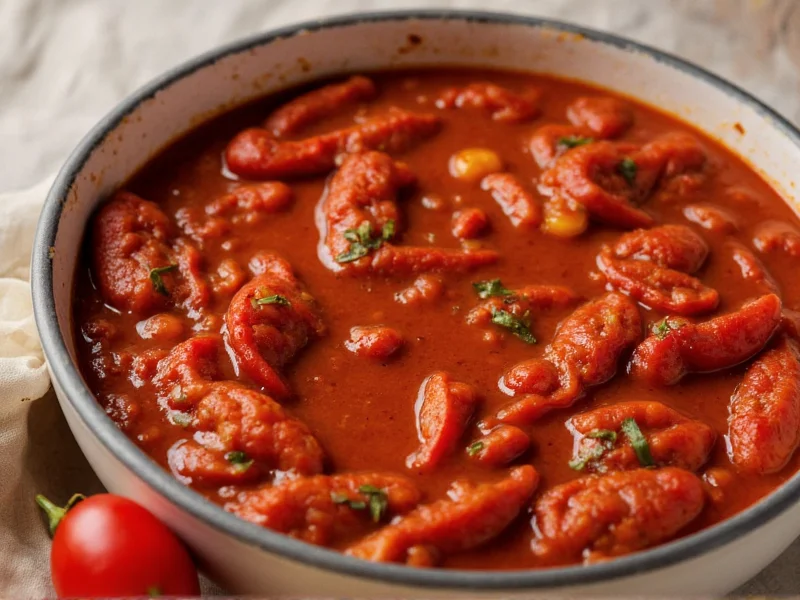The term "red bird chili" creates frequent confusion in culinary circles. This designation refers to dried bird's eye chilies, predominantly Thai varieties, that have been dehydrated until they develop a deep red color and brittle texture. Unlike fresh green Thai chilies, these dried versions concentrate both flavor and heat, making them essential in authentic Thai, Vietnamese, and Cambodian cooking.
Understanding Red Bird Chili Identity
Many shoppers mistakenly believe "red bird chili" represents a unique pepper species. In reality, it's purely a commercial label applied to dried bird's eye chilies. The confusion stems from inconsistent naming practices across spice distributors. When examining packaging, look for scientific classification Capsicum annuum to confirm you're getting genuine bird's eye chilies rather than substitutes like pequín or chiltepin peppers.
| Characteristic | Red Bird Chili (Dried) | Fresh Thai Chili |
|---|---|---|
| Color | Bright to dark red | Green (ripening to red) |
| Length | 1.5-2.5 inches | 1-2 inches |
| Heat Level | 25,000-50,000 SHU | 50,000-100,000 SHU |
| Flavor Profile | Intense heat, subtle sweetness | Grassy, floral, fiery |
Heat Level and Flavor Analysis
Red bird chilies deliver significant heat but with nuanced flavor beyond mere spiciness. Their Scoville rating of 25,000-50,000 places them substantially hotter than jalapeños (2,500-8,000 SHU) but milder than habaneros (100,000-350,000 SHU). The drying process transforms their flavor profile, reducing grassy notes while enhancing subtle fruitiness. This makes them particularly valuable in dishes where you want pronounced heat without overwhelming the dish's aromatic complexity.
Chefs appreciate how red bird chilies maintain structural integrity during cooking compared to fresh counterparts. Their dried nature allows them to infuse oils gradually, releasing heat steadily rather than all at once. This controlled heat dispersion proves especially useful in simmered dishes like curries and broths where balanced spiciness matters.
Culinary Applications and Substitutions
Authentic Thai tom yum soup and Vietnamese pho rely on red bird chilies for their characteristic heat. The peppers work exceptionally well in:
- Infused chili oils and vinegars
- Dry rubs for meats and seafood
- Spice pastes for curries and stir-fries
- Preserved in fish sauce or vinegar
When substituting red bird chilies, consider both heat level and flavor profile. Dried cayenne peppers offer similar heat but lack the subtle sweetness. For closest approximation, combine crushed dried Thai chilies with a pinch of paprika. Remember that one dried red bird chili typically equals 1.5-2 fresh Thai chilies in heat intensity due to concentration during dehydration.
Availability and Storage Guidelines
Asian grocery stores most reliably stock authentic red bird chilies, typically sold in small cellophane bags or bulk bins. Quality specimens should snap cleanly when bent, indicating proper dehydration. Avoid any with dark spots or flexible texture, which suggest moisture retention and potential mold.
Proper storage extends shelf life significantly. Keep dried chilies in airtight containers away from light and heat. When stored correctly, they maintain optimal flavor for 6-12 months. For extended preservation, freeze them in vacuum-sealed bags where they'll retain quality for up to two years. Never store near strong-smelling foods as dried chilies readily absorb surrounding odors.
Safety and Handling Best Practices
The concentrated capsaicin in red bird chilies demands careful handling. Always wear gloves when preparing them and avoid touching your face. If you experience skin irritation, apply milk or yogurt rather than water, which spreads the oil. When cooking with dried chilies, add them early in the process to allow gradual heat infusion, preventing sudden overwhelming spiciness.
For those sensitive to heat, remove seeds and white membranes before use—these contain the highest capsaicin concentrations. When adjusting recipes, start with half the recommended amount and gradually increase to desired heat level. Remember that cooking intensifies chili heat initially before mellowing slightly during prolonged simmering.
Frequently Asked Questions
What exactly is red bird chili?
Red bird chili is a marketing term for dried Thai bird's eye chilies (Capsicum annuum). It's not a distinct variety but refers to small, dried red chilies commonly used in Southeast Asian cooking. These measure 25,000-50,000 Scoville units and provide intense heat with subtle sweetness.
How hot are red bird chilies compared to other peppers?
Red bird chilies range from 25,000-50,000 Scoville Heat Units, making them significantly hotter than jalapeños (2,500-8,000 SHU) but milder than habaneros (100,000-350,000 SHU). They're approximately half as hot as fresh green Thai chilies due to chemical changes during the drying process.
Can I substitute red bird chili with other dried peppers?
Yes, but with flavor considerations. Dried cayenne offers similar heat but lacks the subtle sweetness. For closest approximation, combine crushed dried Thai chilies with a pinch of paprika. One dried red bird chili typically equals 1.5-2 fresh Thai chilies in heat intensity due to concentration during dehydration.
How should I store red bird chilies for maximum freshness?
Store dried red bird chilies in airtight containers away from light and heat. Properly stored, they maintain optimal flavor for 6-12 months. For extended preservation up to two years, freeze them in vacuum-sealed bags. Quality specimens should snap cleanly when bent, indicating proper dehydration.
Why do recipes specify red bird chili instead of just Thai chili?
The distinction matters because red bird chilies refer specifically to the dried red version of Thai bird's eye chilies. Fresh green Thai chilies have different flavor compounds and higher heat levels. Recipes calling for red bird chilies require the concentrated, slightly sweeter heat profile that only comes from properly dried specimens.











 浙公网安备
33010002000092号
浙公网安备
33010002000092号 浙B2-20120091-4
浙B2-20120091-4